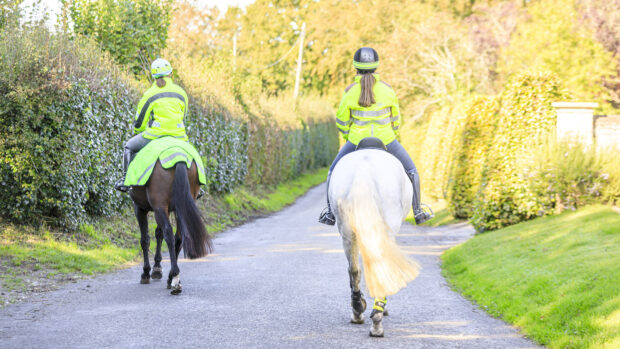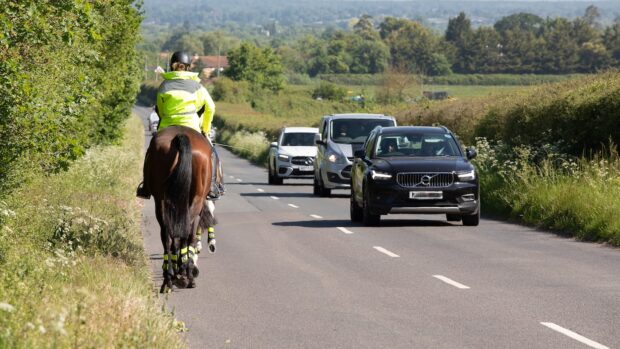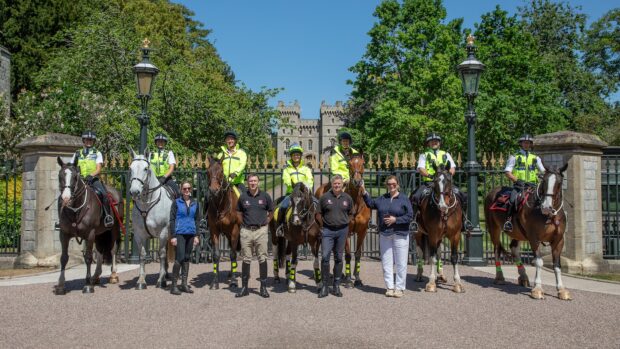Advice to gritter lorry drivers and to riders has been shared by the British Horse Society (BHS) as temperatures drop.
The organisation has set out a series of tips to both groups about what to do should they meet on the roads.
“While encounters between horses and gritting lorries are fairly infrequent, the nature of these vehicles with flashing lights and the noise from the spreading equipment is not familiar to most horses,” said a statement from the BHS, adding this can cause horses to react in unpredictable ways.
“[Drivers should] stop, turn off the gritter and lights, and allow the rider to find a safer place where the horse is less likely to react to the lorry, so you can continue without startling the horse.
“When the horse is settled and in a safe position, continue past the horse at a slow speed – no more than 15 mph – and ideally without flashing lights.
“Once you have passed the horse/rider and can see that they are settled, drive slowly away and reinstate your flashing lights.
“It may take a few moments, but if there is an accident requiring emergency services or vet, you will be delayed even longer.”
Article continues below…
You might also be interested in:

Emotive road safety video featuring boy and his pony goes viral
The video has been viewed more than 680,000 times online

Horses on the road: Horse & Hound’s helpful guide for the uninitiated
H&H’s website editor writes an open letter to drivers in an attempt to help them understand the risks of passing

Mounted police educate drivers on how to pass horses
The action was taken after a significant increase in the number of reported incidents
The BHS recommends riders find out which of the roads they hack out on are gritted and sign up to notification services provided by highways authorities or local councils, lowering the risk of meeting a gritter when riding.
“Gritter lorries cannot miss sections of road in the salt distribution as to do so risks dangerous ice,” adds the BHS statement.
“Except on wide roads, the salt is sprayed over both lanes but not beyond the kerb. So you should move off the main carriageway [without going on any pathways] and as far away from the gritting area as possible.
“If you see that a gritter lorry is behind you, look for somewhere safe to step off the main carriageway. Turn your horse’s head so they can see the source of the noise and flashing lights.
“Once you have done so, signal to the driver that your horse is settled; they should then pass you slowly.”
The BHS also reminded riders to wear high-vis clothing when out riding and to report any incidents to its reporting page, www.horseaccidents.org.uk
For all the latest news analysis, competition reports, interviews, features and much more, don’t miss Horse & Hound magazine, on sale every Thursday



